Minimalistic Full-Body Program
I want to show you how I’ve been training lately.
I want to show you how I’ve been training lately.
Some may enjoy following my exact program, while others may prefer to follow principles from it.
Since becoming a dad 5+ years ago, I’ve enjoyed the pursuit of efficiency in my workouts, not only in time but in how each ingredient pays off long-term in keeping my body healthy.
Having now been 12 years without a knee or back problem despite a long list prior, I’m incredibly grateful for this knowledge. I never would have guessed I could achieve these results in only 2 hours a week. I used to spend more time than that just patching up my body.
I go through the following workout style twice per week, and I’ll list the sets and reps at the end for you:
1/7. “Hey, before you train, go drag the sled. We didn’t have shit called ‘warmups.’ It was called ‘the shit you do before you train.’”
-Dave Tate

Dave Tate is a legendary powerlifter, and he was referring to the 1990s training style at WestSide Barbell, led by Louie Simmons. These guys were the strongest people on earth!
Olympic trainer Charles Poliquin learned from Louie and used the backward sled drag to help athletes recover faster from knee injuries and win Olympic medals, sometimes in cases where it was thought that they wouldn’t even be able to compete!
Around 2010, inspired by Poliquin, a skinny, failed basketball player with bad knees began sledding hard. He ditched the painkillers and found whole new potentials in life.
He is me. I made my own gym, and sledding became a way of life for me and for people from all walks of life.
My mom has used it as her foundational exercise for amazing athleticism in her 70s. Nana don’t have shit called ‘warmups.’ It’s called the shit Nana does before she trains.
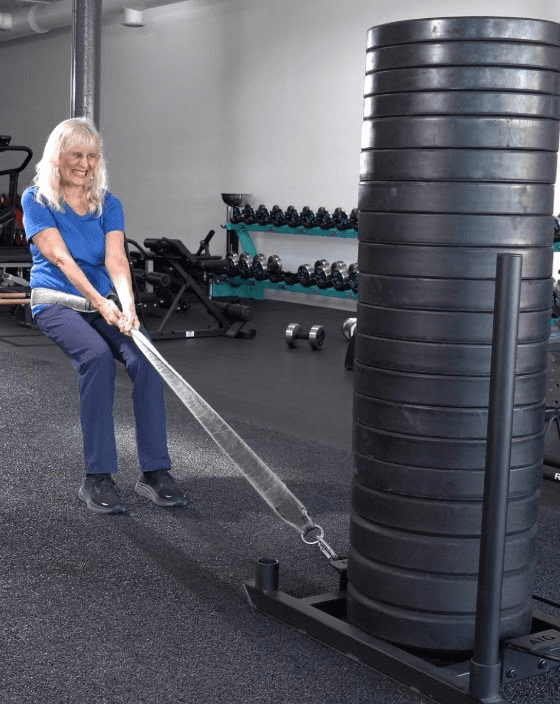
[Note: The above picture was a joke. She really did attempt to drag 1,000 pounds, but that was to demonstrate this unique safety factor: the load isn’t bearing down on you. She did not budge the sled. But she also was not injured in the attempt.]
All joking aside, I want to make EXTRA CLEAR how I feel about sled and exercise in general:
You don’t have to sled!
You don’t have to do any exercises that I do!
Please add anything else you enjoy to your warmup process! In fact, I hope my efficient training style helps you open up time for other things you may want to cover in your physical regimen.
I want you to ENJOY exercise and be HAPPY with your results.
What I think is cool here is that from Dave Tate to my children to their grandmother, people are winning with the sled.
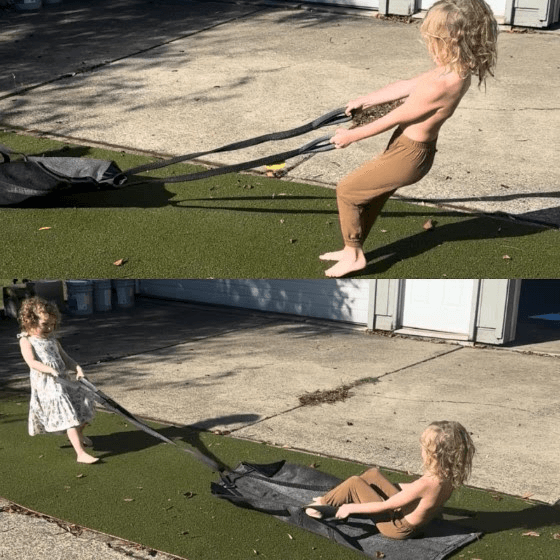
[I made the Buddy Sled specifically for schools since I’ve been coaching at a school and realized how challenging it is to coach 50 people at a time! The Buddy Sled can be used outside or inside and simply allows the students to BE the resistance! I came up with this only recently, but because it’s USA-made, it’ll be stocked and shipping within weeks or even days.]
Since becoming a dad, it’s also more clear to me that sled is not as accessibleas I once assumed.
I brought the first under-$1,000 resisted treadmill to the market a few years ago, and I think there’s a bright future for this category.
Here in Oregon, it’s already getting cold and rainy.
But my resisted treadmill feels like having a hill right in my barn.
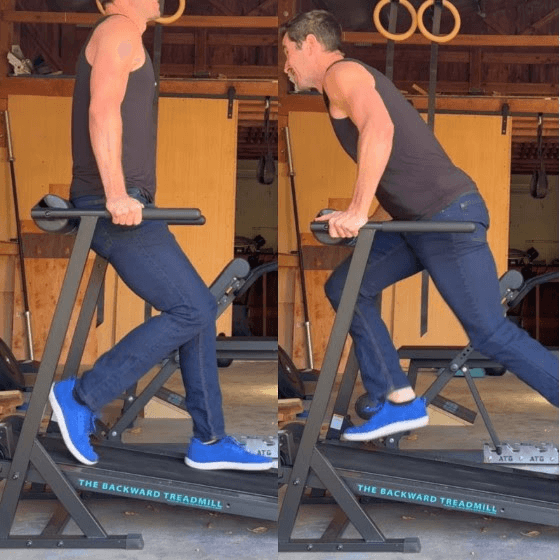
[The original intention of my resisted treadmill was making “backward sled” accessible from any room. I later realized it works great for forward “hill running,” too. I’m 6’1”. It probably wouldn’t be big enough for hill running for someone taller than me. Our slightly larger 2.0 version is on its way to me for testing, and we will continue refining it for years to come, gradually getting more of its components made locally and built to last as long as possible.]
I do 3 sets forward and backward to a good burn, alternating each.
And every time: I’m WOWed by the leg and lung burn I get in such a short time, yet so gently on the joints.
If you’ve ever run up a hill and had that feeling, then you know how valuable I think this category of “hill from home” can be.
I see hills, sleds, and resisted treadmills as an overall family of exercises which allow you to resist your natural movement forward AND BACKWARD, with greater challenge yet lesser risk.
As for precise times and distances, don’t overthink it.
I tried to find the exact distances they were using for the sled at Westside Barbell, and Dave Tate says they measured it by trips up and down the parking lot. “What was the length of a ‘trip’? However long the parking lot was.”
2/7. Ground-up (Ankle)
The next concept that’s become a way of life for me is training “from the ground up.”
This means training the lowest muscles on my body and gradually working upward.
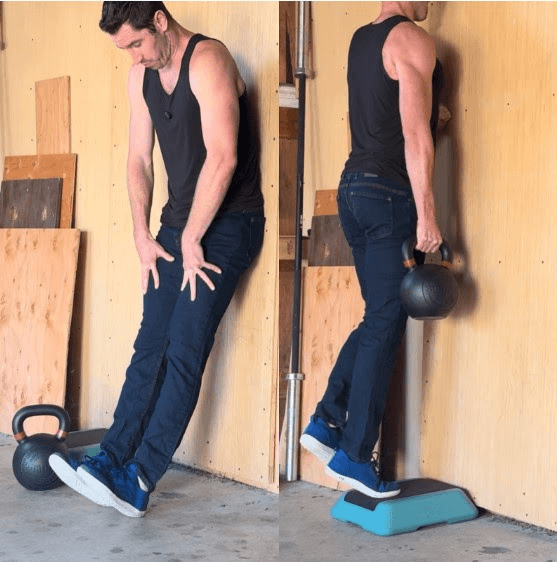
Years ago I wasted hundreds of hours and thousands of dollars on remedies for foot and shin pains, never considering that maybe I wasn’t adequately addressing my ABILITY from the ground up.
Now I’ve enjoyed a decade without those problems, but I don’t expect this to be the case for everyone. I DO know that strength from the ground up is vastly underrated, based on having now helped many other people overcome chronic pains in the feet and lower legs through this approach.
3/7. Ground-up (Knee)
Knee was my biggest problem. With a partially artificial kneecap, reattached quad tendon and replaced meniscus - all by age 18 - I was on a slippery slope (and painkillers).
Sled was my stepping stone to further knee ABILITY exercises.
The main next step for me from stepping backward was stepping down.
(And while resting, you can start working behind the knee.)
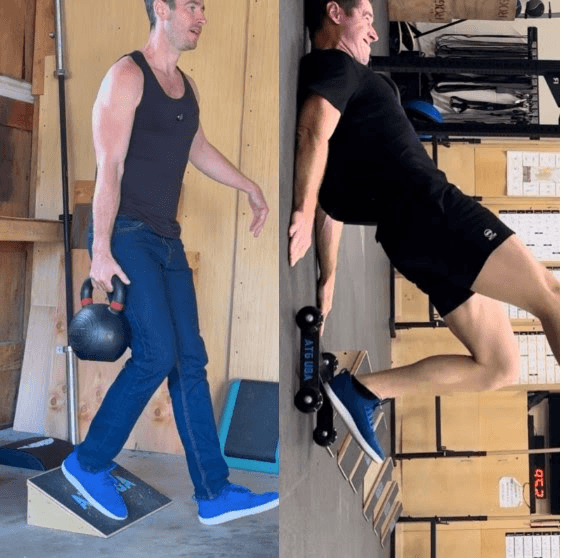
NOTE: Every exercise I use scales to remarkably gentle levels. Over 90% of my articles take the time to show each step of each progression. Since this week’s topic is an overview of my entire program style, I apologize for not taking the time to show every step of every progression.
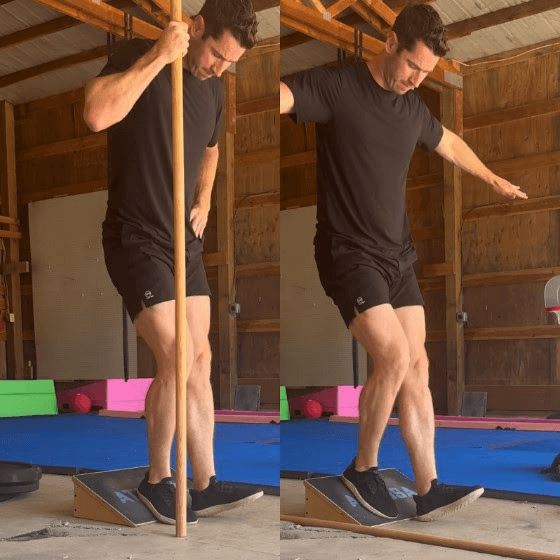
4/7. Strength THROUGH MOBILITY
Becoming known for good mobility was completely unexpected.
My intention was to strengthen my knees and back through full ranges of motion in order to stop getting injured so much.
Now, I think this may actually have been my biggest long-term time-saver of them all.
Working on my strength through my mobility, at my pain-free level, seemed to have the most lasting effects in terms of not reinjuring my knees and back.
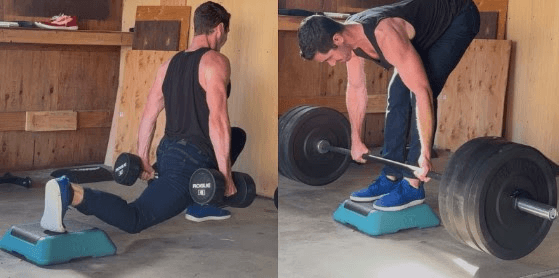
Reminder: It is the gentle, step-by-step nature of the exercises that allowed me to pursue this path! Never work through a level or range that doesn’t feel good for you.
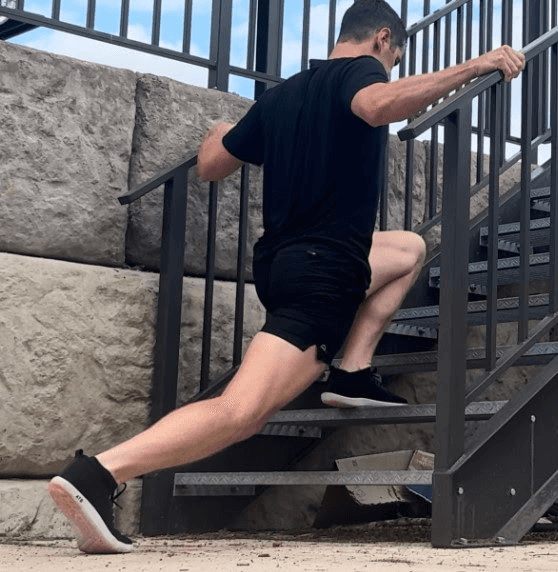
5/7. Pick UP Those Legs
The aftermath of knee surgery left me with extreme loss of muscle in my legs.
Steps 1-4 helped me build back well-functioning legs, but something felt missing in my running until I realized how weak I’d become in the muscles that pick up my legs.
I make sure to do one set to burnout in such an exercise, before moving to the torso and arms.
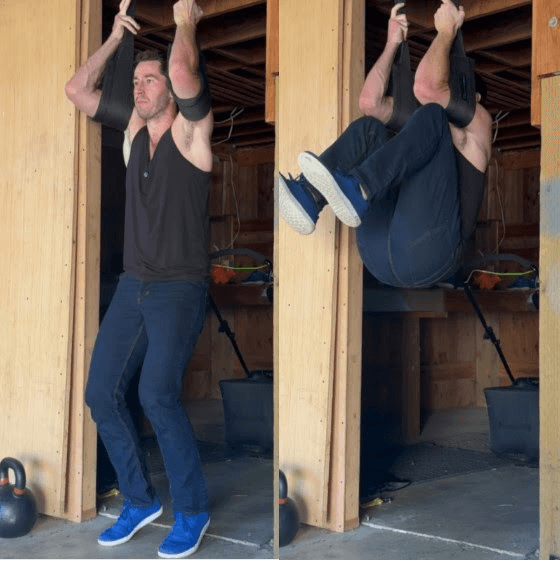
6/7. Lateral
I like to do one lateral ingredient for extra confidence in my knees and back when playing basketball.
I don’t think these are mandatory, but they don’t take much time, particularly when built on the robust foundation above.
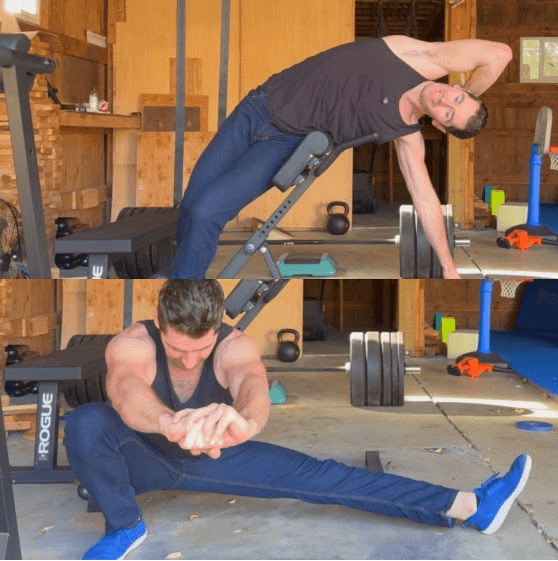
Last reminder for this article: In my coaching experience, there is always a way to turn a desired pain-free ability into a step-by-step progression. This doesn’t mean everyone will get to the end of each progression, but you can usually find and achieve a good level compared to the norm, without forcing anything that doesn’t feel good for you. Bodies adapt… just slowly.
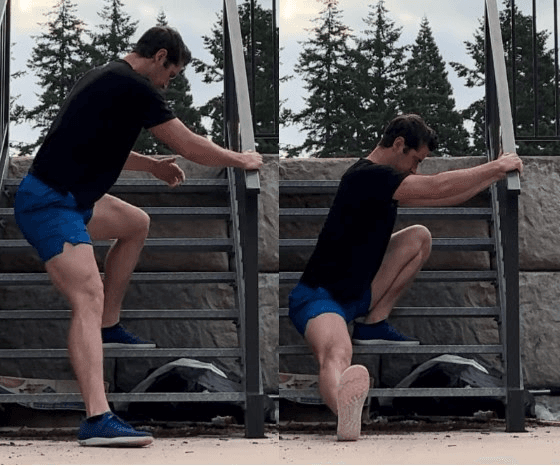
7/7. Upper Body
Sometimes I get this done immediately, and other times I call it quits right here, and do my upper body exercises later when the kids are playing in the barn.
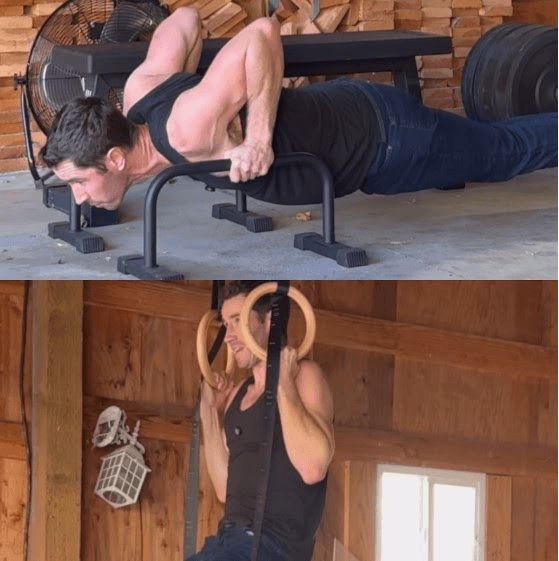
Note: Your Goals Are YOUR GOALS
The two most important training goals for me by far are playing with my kids and playing basketball without breaking down.
The steps above have been life-changing for my goals.
So I use a baseline where I simply ensure that I can do 10 full pull-ups every week.
I’ll maintain this as long as I can.
If I can do that, I don’t think my arms are too weak.
But I rarely ever do more than 1 set per upper body exercise.
I push hard, I enjoy the 1 set, and then I’m done.
Maybe my goals will change in the future.
And maybe yours will, too.
You and I don’t have to have the same goals.
You don’t have to train exactly like I do.
But I hope you still gather something useful from this for your own journey.
Now, here’s my current workout list:
Workout 1 of 2
Resisted Forward & Backward 3 x burn
Tibialis 1 x burnout
Calf Raise 2 x 10
Slant Step-up 2 x 25
Ham Curl or Nordic Negative 2 x 8
Heels-Elevated Squat 5 x 5 5-Sec Down
Hanging Knee Raise 1 x burnout
Cossack Squat 2 x 8
4-Way Leg Swings 1 x 10 Each
Full Pull-up 1 x Burnout
Full Shoulder Press 1 x up to 12
Rings Face Pull 1 x 15
Workout 2 of 2
Resisted Forward & Backward 3 x burn
Tibialis 1 x burnout
Calf Raise 2 x 10
Slant Step-up 2 x 25
Back Extension 2 x 15
ATG Split Squat 4 x 8
RDL 4 x 8
L-Sit Leg Extension 1 x burnout
QL 1 x burnout
4-Way Leg Swings 1 x 10 Each
Rings Row 1 x 12
Full Push-up 1 x Burnout
Rings Face Pull 1 x up to 15
Yours in Solutions,
Ben
Sign up for free knowledge
We send out new articles weekly.